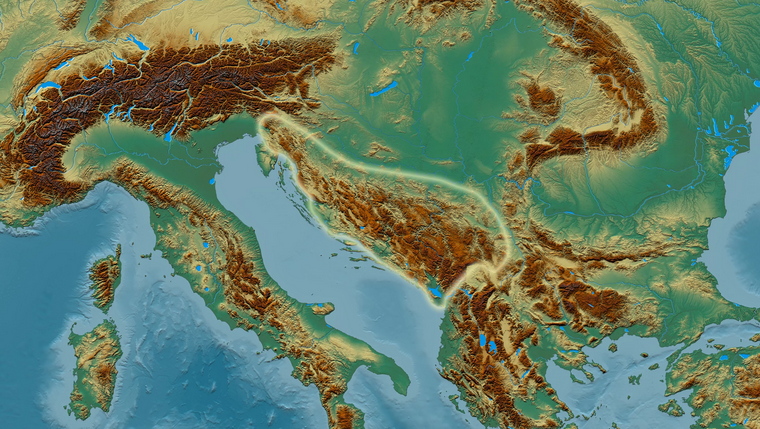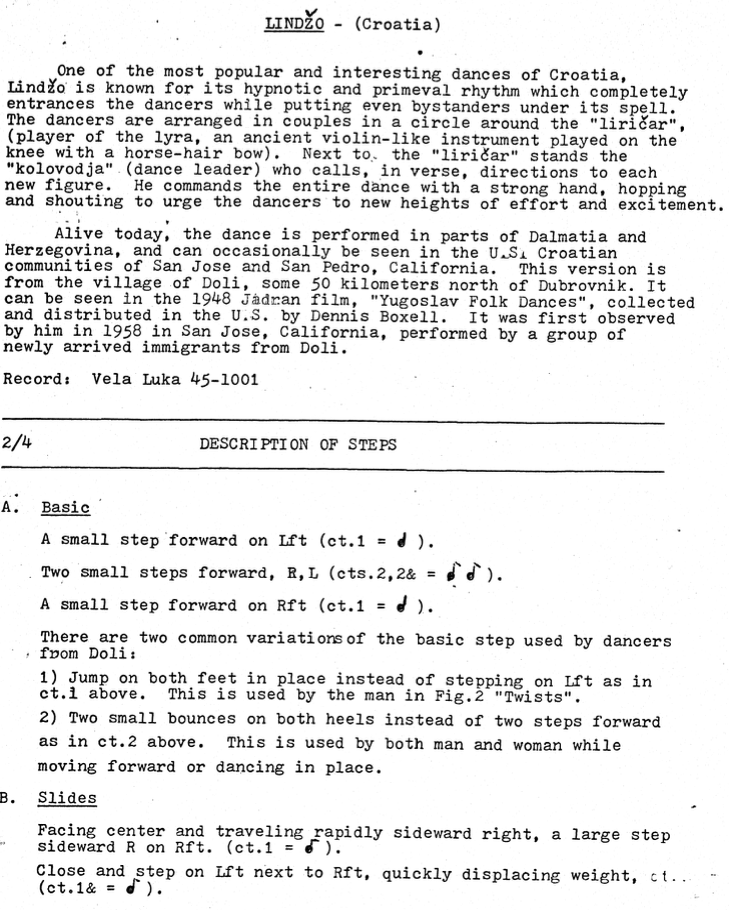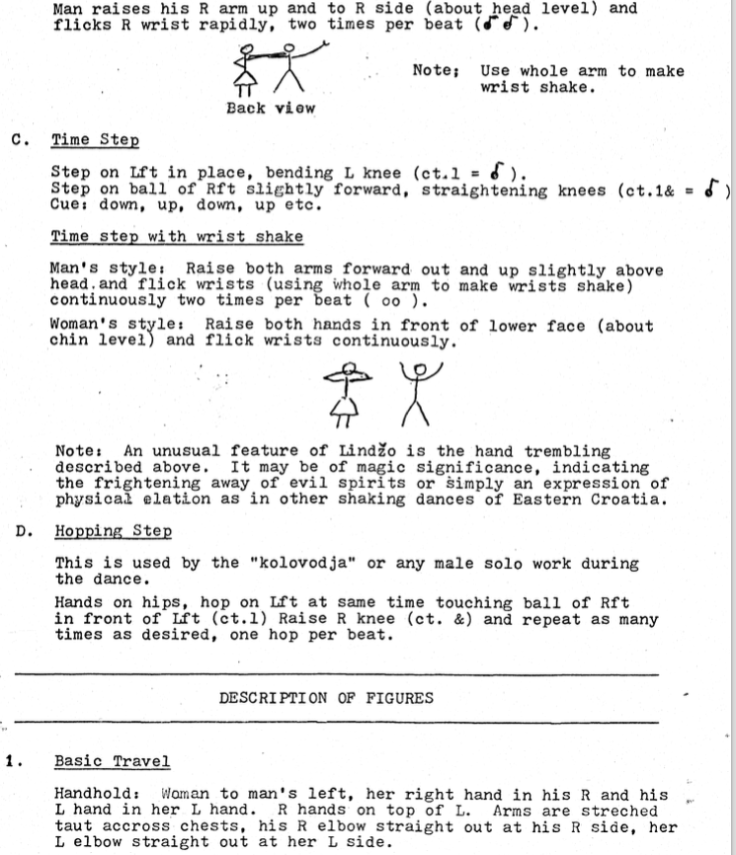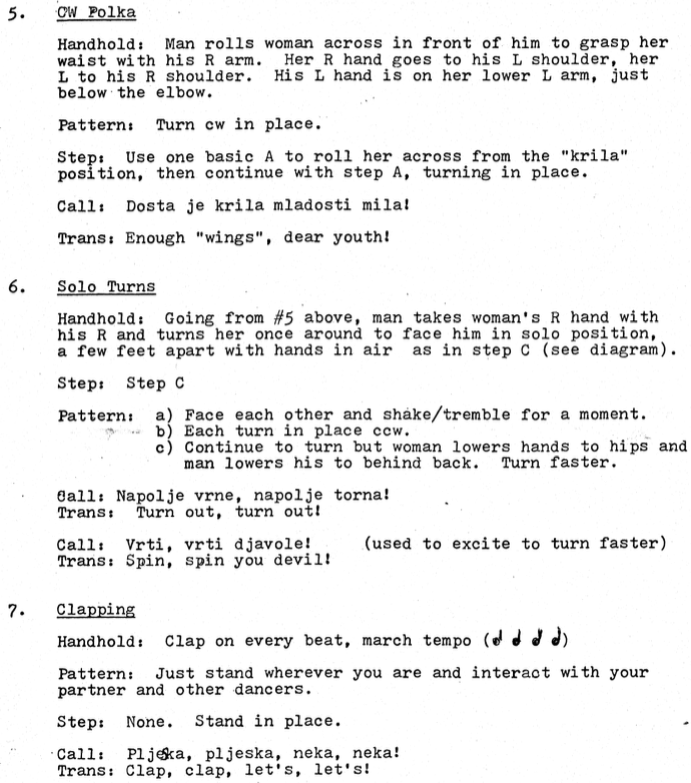*a Living dance is a 1st Generation dance that is still performed in the country of origin (or immigrant communities) as part of a social event like a wedding where others can participate (not for an audience) by people who learned the dance informally (from friends and relatives by observation and imitation, not in a classroom situation). For more information, click here and here.
As a general rule there are very few couple dances in the Balkans. To understand why, click here . What couple dances exist are usually the result of a strong influence from a neighbouring power from Northern or Western Europe., usually one who is in a position of domination. A good example of outside influence is the Dalmatian Coast of Croatia.

Although the population is composed primarily of Slavic and Illyrian stock, the Dinaric Alps divide the region into a large highland and mountain culture, and a thin strip of coastal area wedged between mountains and the Adriatic sea. People on the coast found it easier to trade and communicate with, travel to, (and be dominated by) stronger Italian and Austrian powers, than to climb up to see their cousins in and over the mountains. Venice ruled the coast from roughly 1400-1800, Austria took over until 1918 – over 500 years of domination by cultures with a strong tradition of couple dancing.

Lindjo, or Lindžo, in some areas called poskočica, is the representative dance of the southern Croatian coast, as it has been for hundreds of years. Villages have their own variations, but the essence of the dance varies little. It is the dance performed for tourists to the region, and at village celebrations, like weddings, among the locals. The dance almost died out with the demise of village life, but in the last 20 years or so it has been revived by a younger generation newly interested in their almost extinct heritage. I suspect the more proficient dancers in out-of-costume local events (shown in YouTubes below) are members of local performing groups.
This paragraph explains the origin of the word Lindjo, and a bit of it’s history. “The poskočica is a traditional wheel dance danced in pairs in the area of the former Dubrovnik Republic. The names kolo and poskočica, or kolo poskočica, are older, while the name linđo for the same dance came into use at the end of the19th century. According to oral history, the expression Linđo was originally simply a nickname of the famous parish lijerica player Nikola Lale from Petrača (4th October 1843 – 17th January 1907). At the end of the 19th century, due to Lale’s superb skill and recognisability, his nickname became the general appellation for a rural musician who played the three-string instrument lijerica or lijera, and after that, the name for the poskočica….In the Academy Dictionary, also known as the Dictionary of the Yugoslav Academy of Science and Art, published from 1880 to 1976, the expression lindovanje is defined as lounging about and the expression lindovan as a man who engages in lindovanje. These words originate from the Turkish words lejn – soft and linet – softness, weakness. On the basis of the above-mentioned, the Turkism linđo is interpreted as a hypocoristic of the word lindovan and denotes an idle man, a merry fellow, an entertainer….Unlike the popular term linđo, the older familiar expression poskočica or kolo tells us much more about the dance’s origin and structure. This name has remained in use in Konavle and Župa dubrovačka, while the newer name linđo has prevailed in the Dubrovnik coastal region. In the dictionaries Dictionar by Juraj Habdelić from 1670 and Gazophylacium by Ivan Belostenec from 1740, the term poskočnica is closely connected with songs accompanying wheel dances, especially those of a “shameless” (as stated in these works) character, i.e. those on the subject of love. These were humorous and spirited songs and fast-moving wheel dances centred around the symbolic regeneration of nature and love affairs, which indicates that they were often remnants of the earlier ritual dances accompanied by song, often of mythological content. In the 18th century, Jesuit Juraj Mulih characterized these songs as dishonest, rude and dangerous. The poskočnicas were songs, as well as wheel dances accompanied by songs usually sung by female dancers. One person would start singing the main verses, while the others would join in by repeating the verses during the wheel dance. Proof that the poskočicas were once wheel dances accompanied by song can be found in the term reći kolo (“speak the wheel dance”), which refers both to the musical and vocal accompaniment to the wheel dance.” Source: http://muzej.lindjo.hr/en/traditional-culture-of-dubrovnik-and-its-surroundings/dance-and-musical-heritage-/history-of-the-dubrovnik-poskocica–lindo/ This valuable site contains much more information on the history and practices of poskočica/Lindjo.






From Festive Dress and Dance Occasions in Yugoslavia @1984 by the Regents of the U. of California. Author, Elsie Ivancich Dunin. Lindjo Dancing. “Lindjo is a dance performed by a male / female couple accompanied by a seated musician playing the lijerica. At a wedding the dance is “opened” by the leader of the svatovi (stari [elder] svat), who stamps his feet and turns with arms held above his head or on his hips. He dances for as long as he wishes, sometimes pausing to rest. Eventually the bride is directed to join him. Together they move through all of the patterns of the dance: spinning as a couple around the musician, performing a move in which the bride is lifted into the air, stepping toward and away from the musician, and separating from each other with turning movements and foot stamping. After several minutes of dancing, the bride is passed to another svat who continues the same dance. The stari svat meanwhile invites another female to accompany him. After three or four women have danced with the stari svat and other svatovi, the leader invites everyone to join in. Eight to thirty couples (depending on available space) perform movement patterns at the direction of the leader while circling around the musician. Although the patterns are identical, each male dances them quite differently, causing the female partners to adjust to each new style. No one may drop out once they have joined in until the leader calls a halt. A dance may last anywhere from several minutes to nearly an hour. Subsequent lindjo dances can be led by either svatovi or visitors to the dance. Lindjo dancing is the only time that uninvited guests participate in the wedding cycle.”


